Tracking organic shopping traffic is essential for understanding how customers find your site through search engines.
With Google Analytics 4 (GA4), you get new tools to see what works and what doesn’t.
In this post, we’ll break down how to use GA4 to optimize your organic traffic and boost sales.
What is Organic Shopping in Google Analytics 4 (GA4)?
Organic shopping in Google Analytics 4 is described as a default channel if users arrive at a website or application via non-advertisement (unpaid/organic) links on shopping platforms such as Google Shopping Feed, Amazon, or eBay.
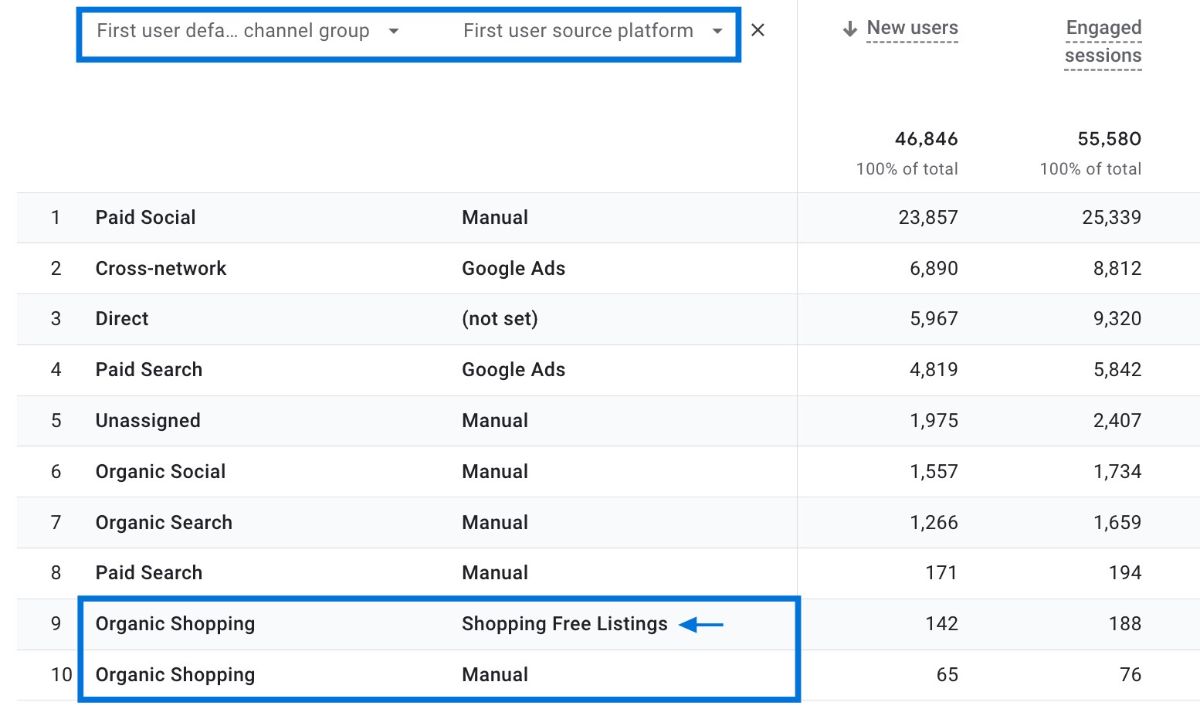
In other words, when users find your website and access it through direct links (unpaid or non-ad links) on shopping sites, it is classified as organic shopping in GA4.
In GA4, organic shopping refers to a specific default channel group that tracks traffic and conversions coming from organic search results on different shopping platforms (for example, shopping-free listings) or search engines.
These non-ad links can appear in:
- Organic Search Results: Users may visit your website or app through unpaid links displayed in search engine results pages (SERPs) when they search relevant topics on channels like Google, or Bing.
- Shopping Platforms: Users can access to your website through direct links on several shopping platforms such as Amazon, eBay, or Etsy. These direct links can appear in search engine results, category pages, or product recommendations on the platform.
- Social Media Channels: Non-ad links can be shared on many social media platforms like Facebook, Instagram, TikTok, or Pinterest. Content creators may mention or suggest your website in their content. When users click on these links, they will be directed to your website leading to organic traffic.
- Referral Links: Referral links on other online channels can also drive organic traffic to your website. These links can be editorial mentions or recommendation posts from other sources.
Where to Find Organic Shopping Data in GA4?
Since organic shopping is a default channel group , you can quickly view it in acquisition reports. Here is how:
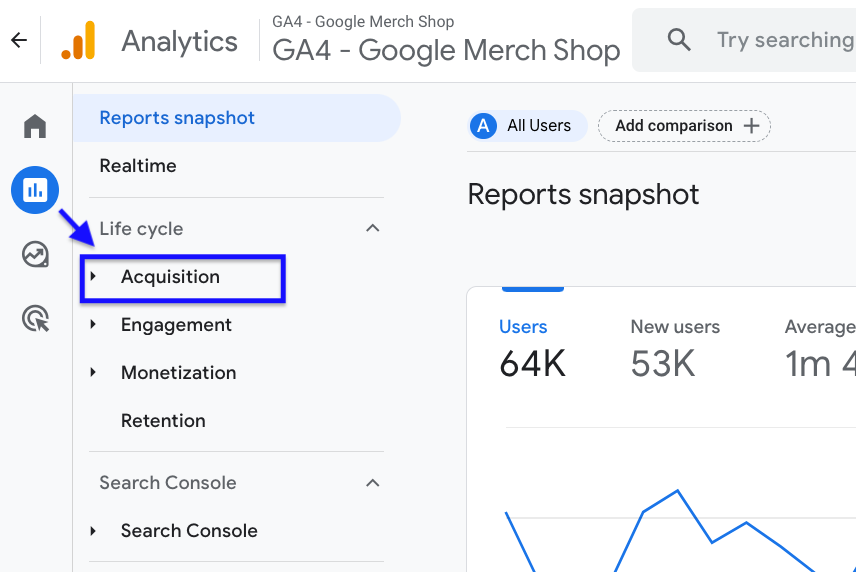
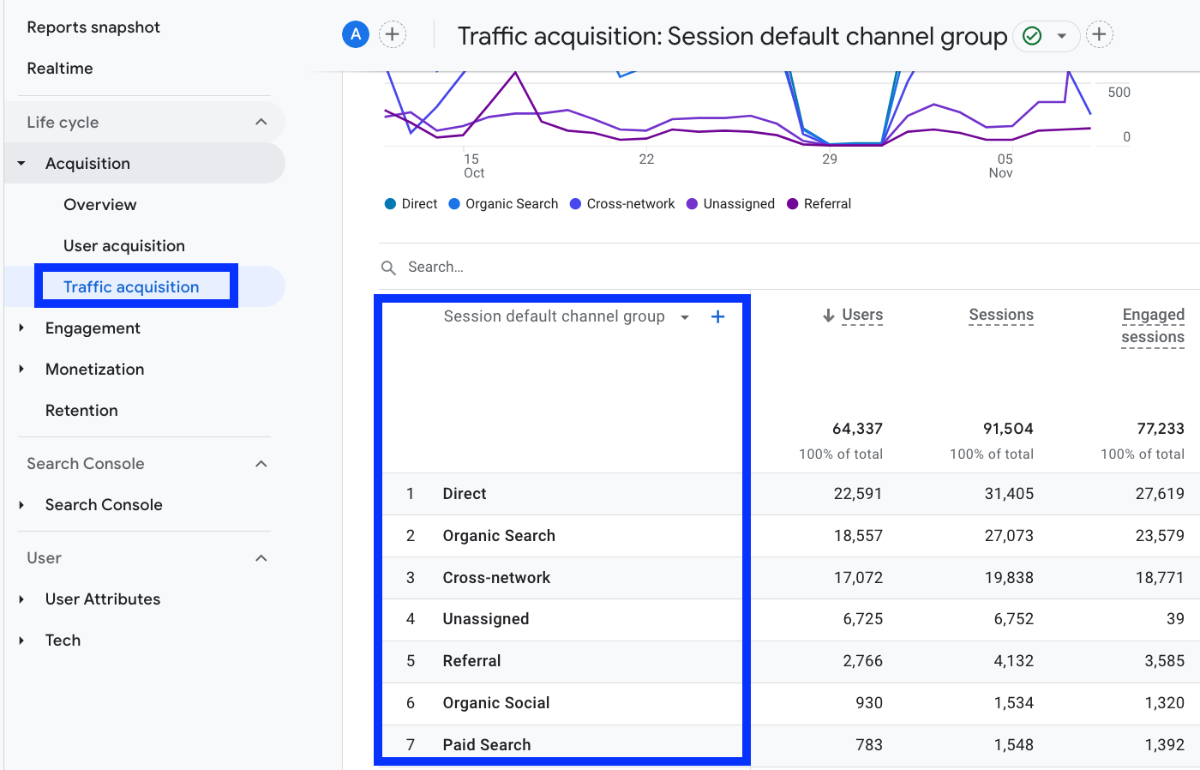
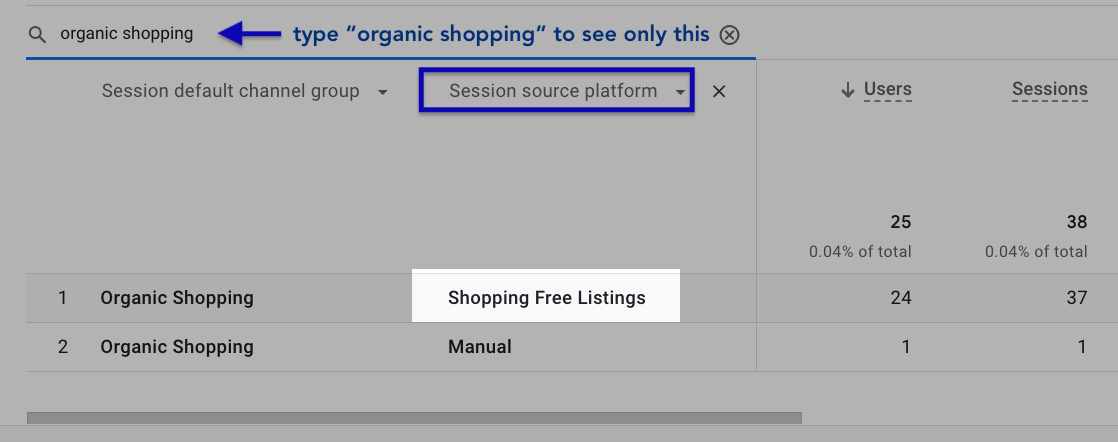
How Does Google Analytics 4 (GA4) Use Organic Shopping?
In Google Analytics 4, tracking organic shopping includes setting up and configuring UTM parameters to collect the relevant data.
By implementing the correct tracking codes and using GA4's reporting, you can gain valuable insights into the performance of your website in driving organic shopping traffic from different shopping sites.
Organic Shopping Traffic in Google Analytics 4 (GA4)
There are two types of organic shopping traffic that can be tracked in Google Analytics 4: organic shopping from Google sources and organic shopping from non-Google sources.
1. Organic Shopping from Google Sources
Organic shopping from Google sources refers to the traffic that comes from platforms where your products or photos are displayed as part of Google's Shopping Free Listings. These organic/free shopping lists are displayed when you successfully upload your products to the Google Merchant Center (GMC).
If a user clicks on one of your products displayed in these shopping resources and subsequently arrives at your site, the Default Channel Grouping is set as Organic Shopping in Google Analytics 4.
The following are the Google Shopping Free Listings resources associated with organic shopping from Google sources:
- Shopping Tab (shopping.google.com)
- Google Search (google.com)
- Google Images (images.google.com)
- YouTube (youtube.com)
You'll find free product listings in various spots when you search on Google. One example is that they appear just below the paid ads in the shopping section. To illustrate:
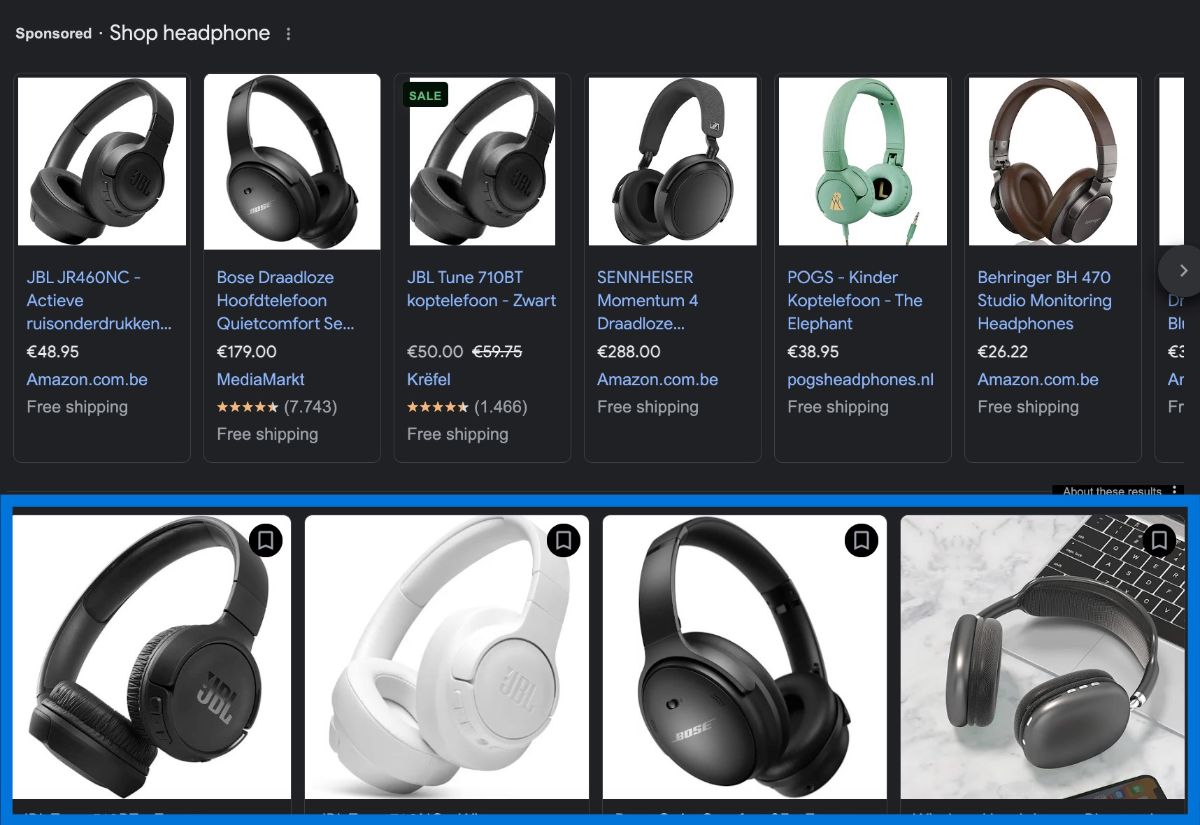
When users discover your products through these Google shopping pages and click on them to visit your site, their sessions will be classified as organic shopping traffic.
2. Organic Shopping from Non-Google Sources
Organic shopping traffic can come from sources other than Google, and it is still classified as organic shopping in GA4 default channel groups .
When it comes to accessing organic shopping data from sources other than Google, there are two essential parameters to consider:
- utm_source
- utm_campaign
This type of organic shopping traffic is identified using either the utm_source parameter or the utm_campaign parameter in the URL.
utm_source for Organic Shopping in GA4
If the utm_source parameter is classified as "SOURCE_CATEGORY_SHOPPING" and is listed as one of the sources in this category, such as Amazon, Alibaba, Shopify, or eBay, then the traffic is categorized as organic shopping in GA4.
You can review the full list of sources and categories for GA4 default channel grouping .
utm_campaign for Organic Shopping in GA4
For manual traffic, if the utm_campaign parameter contains the keywords shop or shopping , it will be also considered as organic shopping in GA4 reports.
|
Organic Shopping |
The source matches a list of shopping sites OR Campaign name matches regex ^(.*(([^a-df-z]|^)shop|shopping).*)$ |
Conclusion
By tracking organic shopping from both Google and non-Google sources, you can understand how users are visiting your website through organic shopping platforms.
Keep in mind that you need to configure the appropriate tracking codes and UTM parameters in Google Analytics 4 to capture and analyze this valuable organic shopping data.
With this information, you can optimize your marketing strategies, allocate resources effectively, and enhance the user experience to drive conversions and achieve your business goals.
